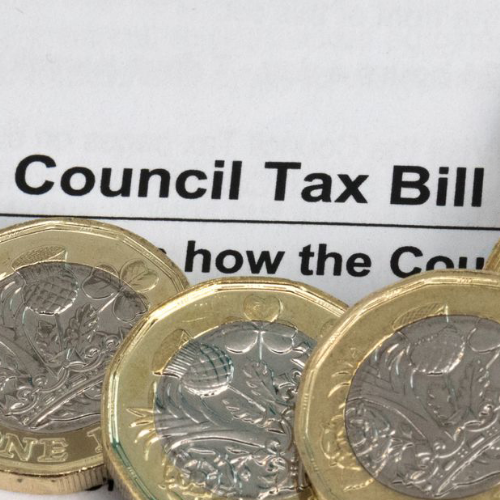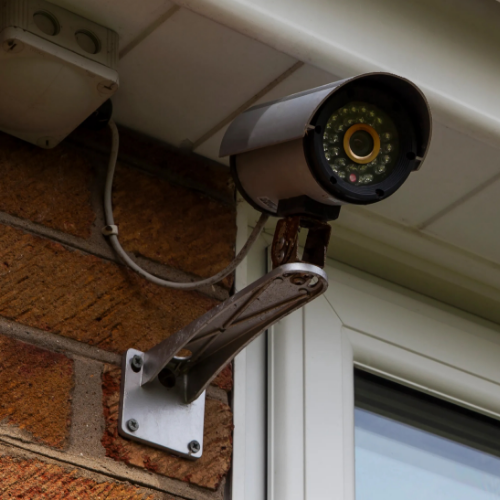5 Hidden Costs And Risk Of Void Period And Refurbs
When it comes to owning and managing properties, unexpected costs can arise, especially during void periods or refurbishments. As a landlord or property investor, these costs can be frustrating as they can eat into your expected rental income and catch you off guard.
In fact, according to Paragon, over 80% of landlords carry out refurbishments when adding to their portfolio, which often results in an unoccupied property. Fortunately, there are ways to better manage these hidden costs and reduce your financial risks.
To help you better manage these costs, we have identified five hidden expenses that landlords can face during void periods and refurbishments. These expenses include council tax, landlord insurance, utilities, security, regular inspections, and reletting fees.
Here's a glance at the 5 hidden costs:
-
Council tax
-
Regular inspections
-
Utilities
-
Landlord insurance
-
Security
1.Council Tax

When a property is tenanted, the renters are usually responsible for council tax (except for some HMOs). However, council tax may need to be paid by landlords when a property is empty. That said, the policies of local authorities differ considerably.
As the rules vary so much from council to council, it’s important to check the exact policy of the local authority. Don’t make any assumptions, and do claim any discounts for major repair work, if the council offers them.
2. REGULAR INSPECTIONS

Visiting an empty property at least once a week is a good idea, especially if required by insurance companies. If the owner is unable to do this, the letting agent may offer this service for an extra fee.
It's crucial to have someone check on the property periodically to ensure that everything is in order and that any problems are detected and addressed promptly.
Regular inspections can help prevent issues from escalating, such as water leaks, mold, or pest infestations, which can cause significant damage and incur unexpected costs. These inspections can also help prevent any unauthorised use of the property, such as squatting or illegal activities.
Landlords can conduct inspections themselves, or they can hire a professional property management company to handle this task for them. If you decide to conduct inspections yourself, it's essential to set a regular schedule and adhere to it. This may involve inspecting the property every few weeks or once a month, depending on the length of the void period or the duration of the refurbishment.
During inspections, it's important to check all areas of the property, including the roof, gutters, windows, and doors, as well as the plumbing, electrical, and HVAC systems. It's also important to check for signs of damage, such as cracks or water stains on the walls or ceiling, and address them promptly.
Regular inspections can help landlords identify any necessary repairs or maintenance tasks and ensure that the property is in good condition when it's time to rent it out again. By being proactive and addressing any issues promptly, landlords can avoid costly surprises and minimize financial risks during void periods and refurbishments.
3. Utilities

To save costs on gas and electricity charges during void periods, landlords are responsible for the utilities until the first day of the tenancy. To minimise the cost of utilities, there are some simple tips to follow.
One of the first things to do when a tenant moves out or when you complete a purchase is to take the meter readings or have your own photos as proof of the readings. It is also advisable to order smart meters or take a photo of the meter readings if they already exist.
Switching to a tariff without a standing charge if the property is going to be empty for more than a few weeks is also a good idea. This means that you only pay for the gas and electricity you use, as opposed to paying a daily fee, which can add up quickly.
If it's summer, turn the heating off or onto a low setting if it's winter, as there is no point in heating an empty building. Builders often leave doors open during refurbishments, which can lead to further energy wastage.
By following these simple tips, landlords can save costs during void periods and refurbishments.
Landlords typically encounter fewer issues with water supply when their property is unoccupied. Many water companies do not charge during periods of refurbishment or when the property is vacant, unless there is an "excessive" use of water. However, landlords must inform the water company that the property is unoccupied to avoid being charged. It's essential to contact the company and provide meter readings at the beginning of a void period and then again when the property is tenanted to ensure accurate billing.
4. LANDLORD INSURANCE

When a property is left unoccupied, landlord insurance can become a complicated issue. While some insurance providers offer coverage for 30-90 days, this isn't always the case. As a landlord, it's important to check the terms and conditions of your policy and notify your mortgage broker if your property is going to be unoccupied for an extended period due to refurbishment or void periods.
As a property investor, I've experienced this issue myself. One insurer charged me a higher premium while the property was unoccupied, but later reduced it when it was tenanted, resulting in a partial refund. During this period, coverages may be limited to Fire, Lightning, Aircraft, and Explosion, and the excess may be doubled. Additionally, you'll need to inform your insurance provider when the property is occupied again, and update the Schedule of Insurance to reflect full coverage.
To avoid unexpected surprises, it's important to consult with your mortgage broker and ensure that you have the appropriate insurance coverage based on how long the property is likely to be vacant. For significant refurbishments, it may be necessary to obtain specialist unoccupied property insurance.
5. SECURITY

When a property is left unoccupied for a longer period, security becomes a significant concern for landlords. Theft and break-ins during refurbishment can result in stolen fittings and even windows. To minimise these risks, here are some tips and products I have personally used from Amazon.
CCTV can be an effective deterrent and allow you to monitor the site, but outside cameras require power and often no Wi-Fi is available. To solve this issue, I recommend making the house look occupied can discourage casual passers-by from entering. Inexpensive options include socket timers, which enable lamps to turn on and off at different times in different rooms. Hanging curtains in the front room also provides some privacy.
Look to introduce yourself to the neighbours and ask them to keep an eye on the property. It's also essential to check if your insurance requires any specific security measures. Finally, encourage tradespeople not to leave valuable tools and materials in view overnight.
When it comes to owning and managing properties, unexpected costs can arise, especially during void periods or refurbishments. As a landlord or property investor, these costs can be frustrating as they can eat into your expected rental income and catch you off guard.
In fact, according to Paragon, over 80% of landlords carry out refurbishments when adding to their portfolio, which often results in an unoccupied property. Fortunately, there are ways to better manage these hidden costs and reduce your financial risks.
To help you better manage these costs, we have identified five hidden expenses that landlords can face during void periods and refurbishments. These expenses include council tax, landlord insurance, utilities, security, regular inspections, and reletting fees.
Here's a glance at the 5 hidden costs:
-
Council tax
-
Regular inspections
-
Utilities
-
Landlord insurance
-
Security
1.Council Tax

When a property is tenanted, the renters are usually responsible for council tax (except for some HMOs). However, council tax may need to be paid by landlords when a property is empty. That said, the policies of local authorities differ considerably.
As the rules vary so much from council to council, it’s important to check the exact policy of the local authority. Don’t make any assumptions, and do claim any discounts for major repair work, if the council offers them.
2. REGULAR INSPECTIONS

Visiting an empty property at least once a week is a good idea, especially if required by insurance companies. If the owner is unable to do this, the letting agent may offer this service for an extra fee.
It's crucial to have someone check on the property periodically to ensure that everything is in order and that any problems are detected and addressed promptly.
Regular inspections can help prevent issues from escalating, such as water leaks, mold, or pest infestations, which can cause significant damage and incur unexpected costs. These inspections can also help prevent any unauthorised use of the property, such as squatting or illegal activities.
Landlords can conduct inspections themselves, or they can hire a professional property management company to handle this task for them. If you decide to conduct inspections yourself, it's essential to set a regular schedule and adhere to it. This may involve inspecting the property every few weeks or once a month, depending on the length of the void period or the duration of the refurbishment.
During inspections, it's important to check all areas of the property, including the roof, gutters, windows, and doors, as well as the plumbing, electrical, and HVAC systems. It's also important to check for signs of damage, such as cracks or water stains on the walls or ceiling, and address them promptly.
Regular inspections can help landlords identify any necessary repairs or maintenance tasks and ensure that the property is in good condition when it's time to rent it out again. By being proactive and addressing any issues promptly, landlords can avoid costly surprises and minimize financial risks during void periods and refurbishments.
3. Utilities

To save costs on gas and electricity charges during void periods, landlords are responsible for the utilities until the first day of the tenancy. To minimise the cost of utilities, there are some simple tips to follow.
One of the first things to do when a tenant moves out or when you complete a purchase is to take the meter readings or have your own photos as proof of the readings. It is also advisable to order smart meters or take a photo of the meter readings if they already exist.
Switching to a tariff without a standing charge if the property is going to be empty for more than a few weeks is also a good idea. This means that you only pay for the gas and electricity you use, as opposed to paying a daily fee, which can add up quickly.
If it's summer, turn the heating off or onto a low setting if it's winter, as there is no point in heating an empty building. Builders often leave doors open during refurbishments, which can lead to further energy wastage.
By following these simple tips, landlords can save costs during void periods and refurbishments.
Landlords typically encounter fewer issues with water supply when their property is unoccupied. Many water companies do not charge during periods of refurbishment or when the property is vacant, unless there is an "excessive" use of water. However, landlords must inform the water company that the property is unoccupied to avoid being charged. It's essential to contact the company and provide meter readings at the beginning of a void period and then again when the property is tenanted to ensure accurate billing.
4. LANDLORD INSURANCE

When a property is left unoccupied, landlord insurance can become a complicated issue. While some insurance providers offer coverage for 30-90 days, this isn't always the case. As a landlord, it's important to check the terms and conditions of your policy and notify your mortgage broker if your property is going to be unoccupied for an extended period due to refurbishment or void periods.
As a property investor, I've experienced this issue myself. One insurer charged me a higher premium while the property was unoccupied, but later reduced it when it was tenanted, resulting in a partial refund. During this period, coverages may be limited to Fire, Lightning, Aircraft, and Explosion, and the excess may be doubled. Additionally, you'll need to inform your insurance provider when the property is occupied again, and update the Schedule of Insurance to reflect full coverage.
To avoid unexpected surprises, it's important to consult with your mortgage broker and ensure that you have the appropriate insurance coverage based on how long the property is likely to be vacant. For significant refurbishments, it may be necessary to obtain specialist unoccupied property insurance.
5. SECURITY

When a property is left unoccupied for a longer period, security becomes a significant concern for landlords. Theft and break-ins during refurbishment can result in stolen fittings and even windows. To minimise these risks, here are some tips and products I have personally used from Amazon.
CCTV can be an effective deterrent and allow you to monitor the site, but outside cameras require power and often no Wi-Fi is available. To solve this issue, I recommend making the house look occupied can discourage casual passers-by from entering. Inexpensive options include socket timers, which enable lamps to turn on and off at different times in different rooms. Hanging curtains in the front room also provides some privacy.
Look to introduce yourself to the neighbours and ask them to keep an eye on the property. It's also essential to check if your insurance requires any specific security measures. Finally, encourage tradespeople not to leave valuable tools and materials in view overnight.


